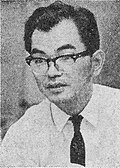
Back Eleccions generals japoneses de 1986 Catalan Shūgiin-Wahl 1986 German Elecciones generales de Japón de 1986 Spanish Élections législatives japonaises de 1986 French Elezioni parlamentari in Giappone del 1986 Italian 第38回衆議院議員総選挙 Japanese 제38회 일본 중의원 의원 총선거 Korean Wybory parlamentarne w Japonii w 1986 roku Polish 1986年日本眾議院議員總選舉 Chinese 第38屆日本眾議院議員總選舉 ZH-YUE
| |||||||||||||||||||||||||||||||||||||||||||||||||||||||||||||||||||||||||||||||||||||
All 512 seats in the House of Representatives 257 seats needed for a majority | |||||||||||||||||||||||||||||||||||||||||||||||||||||||||||||||||||||||||||||||||||||
|---|---|---|---|---|---|---|---|---|---|---|---|---|---|---|---|---|---|---|---|---|---|---|---|---|---|---|---|---|---|---|---|---|---|---|---|---|---|---|---|---|---|---|---|---|---|---|---|---|---|---|---|---|---|---|---|---|---|---|---|---|---|---|---|---|---|---|---|---|---|---|---|---|---|---|---|---|---|---|---|---|---|---|---|---|---|
| Turnout | 71.40% ( | ||||||||||||||||||||||||||||||||||||||||||||||||||||||||||||||||||||||||||||||||||||
| |||||||||||||||||||||||||||||||||||||||||||||||||||||||||||||||||||||||||||||||||||||
 Districts shaded according to winners' vote strength | |||||||||||||||||||||||||||||||||||||||||||||||||||||||||||||||||||||||||||||||||||||
| |||||||||||||||||||||||||||||||||||||||||||||||||||||||||||||||||||||||||||||||||||||
| This article is part of a series on |
 |
|---|
|
|
General elections were held in Japan on 6 July 1986 to elect the 512 members of the House of Representatives, alongside elections for the House of Councillors. The result was a landslide victory for the ruling Liberal Democratic Party (LDP), which gained 50 seats and an outright majority in the House.[1][2] The LDP's 300 seats remains its joint-best general election result.
Most opposition parties lost seat, the exceptions being the Japanese Communist Party (which remained at 26 seats) and the Socialist Democratic Federation, which gained one seat. The biggest losses were experienced by the Japan Socialist Party, which lost 27 seats. The Democratic Socialist Party saw a 12-seat loss, while Kōmeitō saw a loss of three seats and the New Liberal Club, which had been in coalition with the LDP, lost two seats.
Prior to election day, polls indicated that the LDP would win a victory,[3] but the size of the victory was considered unexpected.[1] The New York Times wrote that "the fragmented opposition could not catch fire with any campaign issue."[3] Economic policy was not sharply contested in the campaign; however, the Japanese economy had seen its first quarter of contraction in 11 years.[4]
- ^ a b Inoguchi, Takashi (1987). "The Japanese double election of 6 July 1986". Electoral Studies. 6 (1): 63–69. doi:10.1016/0261-3794(87)90053-9. ISSN 0261-3794.
- ^ Haberman, Clyde (1986-07-13). "MODERN JAPAN, LAND OF SUPERSTITION". The New York Times. ISSN 0362-4331.
- ^ a b Haberman, Clyde; Times, Special To the New York (1986-07-06). "NAKASONE'S FATE RESTS ON VOTE TODAY". The New York Times. ISSN 0362-4331.
- ^ "Nakasone Party Wins Landslide". The Washington Post. 1986.




